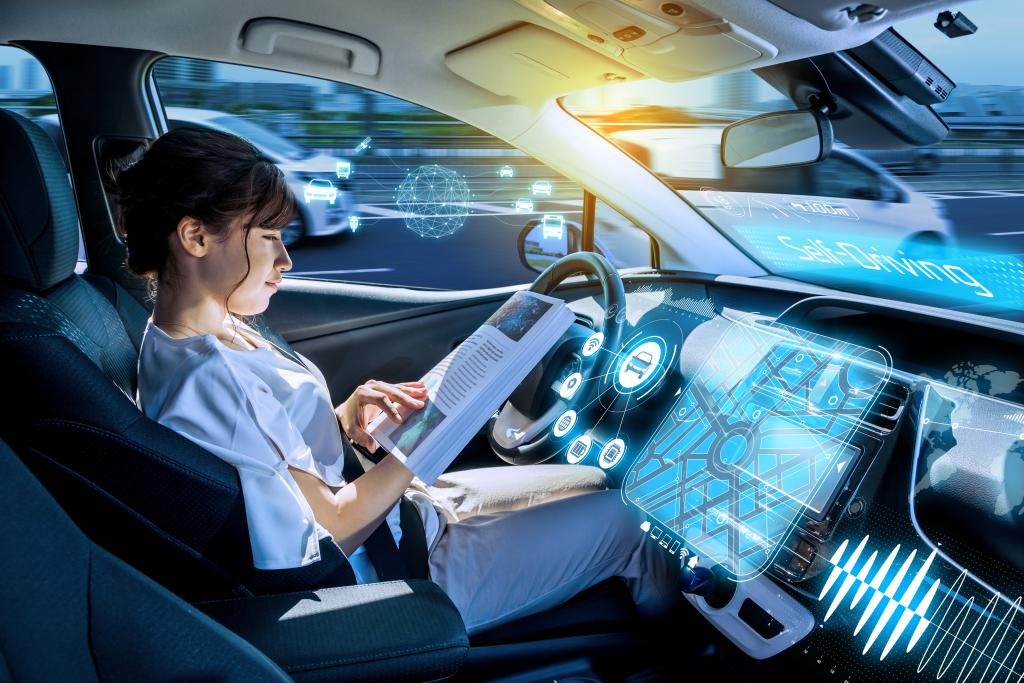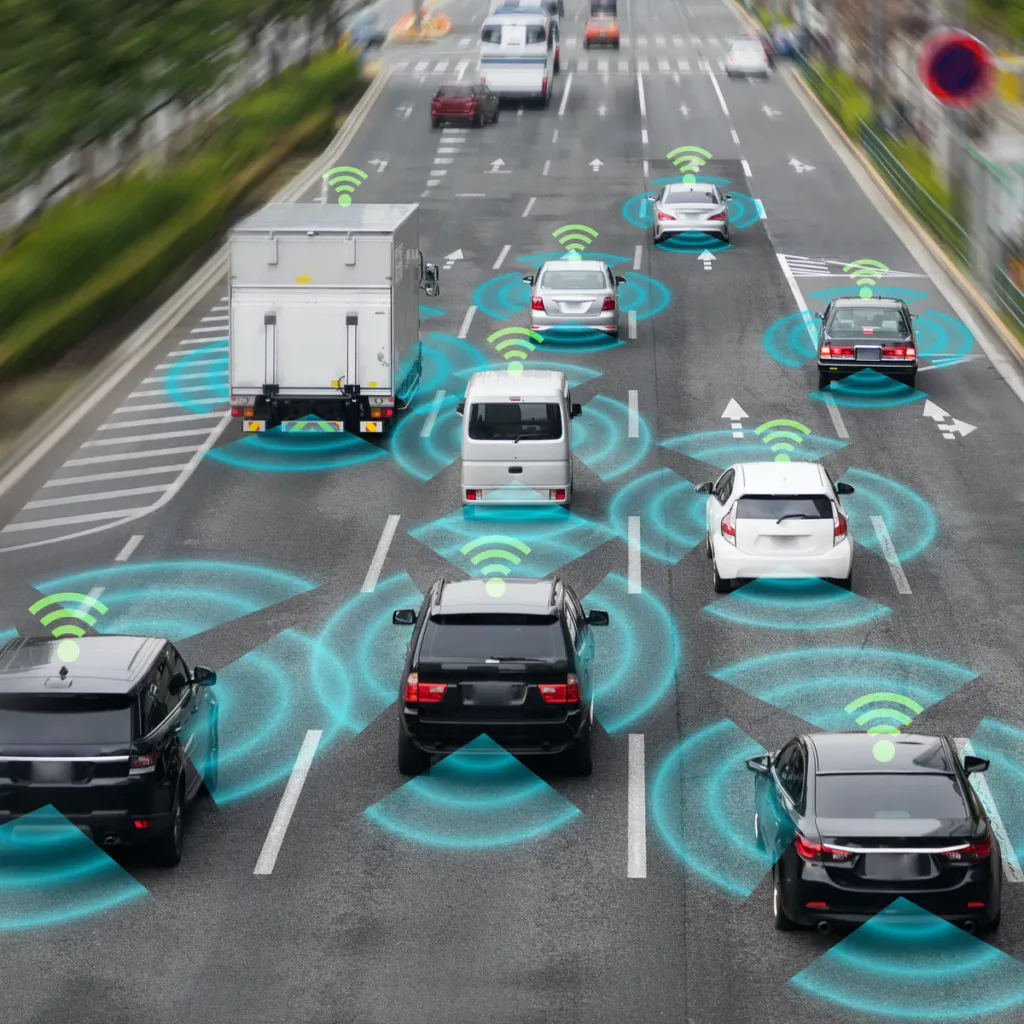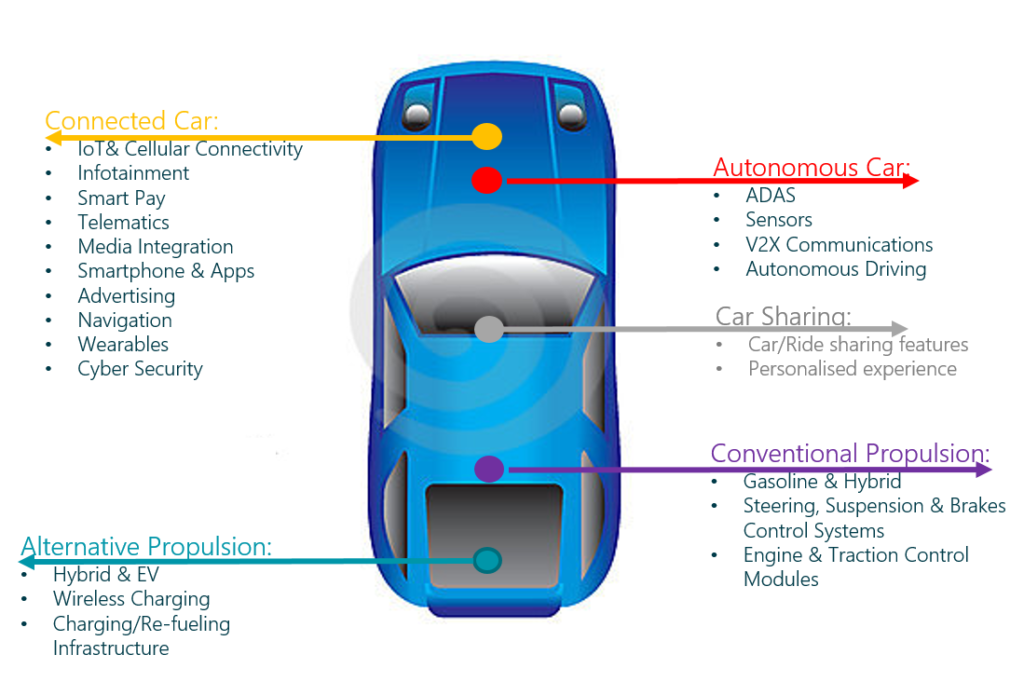
Autonomous Vehicles
Overview of the technology
Autonomous vehicles technology is aimed to automate the driving of vehicles on the roads. Cruise control and park assist are the first deployments of said technology. Such technology applies for all types of road vehicles including cars, vans, trucks, buses and even motorcycles. Self-driving technology is based on a combination of capabilities including (General Motors, 2018, p. 6):
- Safety
- Behavioural Control
- Machine Learning
- Simulation
- Perception
- Localization
- Mapping
- Planning
- Remote Assistance
- Controls
- Dispatch and Routing
- Networking
This technology is primarily aimed to increase road safety by eliminating the human from driving said vehicles. Another benefit of self-driving is the reduction of traffic cause by human interference.

(Image credit The Conversation)
Implications of the technology
“While AVs will be more of a socioeconomic revolution rather than an evolution, we could still see a lot of secondary effects in the decades to come. An example includes changes in the workforce — taxi drivers, certain car mechanics, and traffic officers will no longer be professions” (Patel, 2017). Despite being a technical phenomenon, this technology also has social and ethical implications (Mladenovic, et al., 2014, p. 1). Hevelke and Nida-Remelin (2015, p. 620) state that should an autonomous vehicle crash, the manufacturer of said vehicle, is wholly responsible for any liabilities such incident creates.
Another implication of this technology is the removal of interaction between pedestrians and ghost drivers, i.e. ‘How will pedestrians and cyclists respond to autonomous cars that do not have a visible human driver?’ (Rothenbücher, et al., 2015, p.45). Another implication is related to the safety of the technology itself. The U.S. department of transportation has recommended that any self-driving vehicle demonstrates 28 core competencies (Cerf, 2018, p.7). There are also technical implications related to the actual technologies and systems built to create the self-driving technology. Basically, a self-driving system is made of a convergence of technologies including communication, sensing and computing technologies (Mladenovic, et al., 2014, p. 1).
Risks
Transporting human beings from point A to point B in a blend of self-driving and manual cars, as well as networking these vehicles in a highly connected environment (IoT) poses some major risks. Although 200 car companies and major tech firms are investing in self-driving technology and already deploying some capabilities in the existing manned vehicles, the whole technology is not regulated, hence safety standards are at the discretion of the manufacturer (Technology.org, 2019).
As any networked system, self-driving technology is threatened by Cyber security attacks. Penetrating the on-board system within the car, allows the attacker to remote control the vehicle, thus jeopardizing the safety of the passengers and pedestrians in the vehicle and the road.
In most countries, the existing road infrastructure and conditions (e.g. human drivers competencies), is not optimized for self-driving cars. Also, self-driving cars need to be perceptive of human drivers and this is extremely complicated to simulate and control.
Finally, as with any computing system, internal malfunctions are always possible. Self-driving cars are likely to have somewhere between 30 to 100 computers, most of which are highly sophisticated and still not in their maturity stage (Technology.org, 2019).

Opportunities
Allowing every human being to commute gives independence and opportunities to people who before couldn’t. People like elderly, blind, deaf or afraid of driving were limited. Through self-driving this barrier is broken down allowing all members of the society access to commute equally.
AVs allow users to be commute to destination much easier, safer, faster whilst doing something else from driving. This means that any user in the vehicle is receptive to advertisement media found within the vehicle. The user can easily detour the vehicle to an advert appeared in the infotainment solution found within the AV.
With the transition to electric cars and with introduction of AVs the amount of pollution arising from emissions and waste of material will reduce extensively. Patel (2017), also considers other opportunities arising from AVs, such as Land and Property Use. In a society where, autonomous cars are not owned but shared, garages and parking areas can be repurposed for better use.
Furthermore, in a society where cars are not owned, the AVs are not only an ideal medium for advertisement but also for retail. Beverages, alimentary and cosmetic items are ideal candidates to be available for retail within these public autonomous vehicles.
References
Cerf, V. (2018, February). A Comprehensive Self-Driving Car Test. In Communications of the ACM 61(3). https://doi.org/10.1145/3177753
General Motors (2018). 2018 Self-Driving Safety Report. Retrieved August 8, 2021 from https://www.gm.com/content/dam/company/docs/us/en/gmcom/gmsafetyreport.pdf
Hevelke, A. & Nida-Rumelin, J. (2015). Responsibility for Crashes of Autonomous Vehicles: An Ethical Analysis. In Science and Engineering Ethics 21, 619-630. https://doi.org/10.1007/s11948-014-9565-5
Mladenovic, M. N., Abbas, M., & Mcpherson, T. (2014). Development of socially sustainable traffic-control principles for self-driving vehicles: The ethics of anthropocentric design. 2014 IEEE International Symposium on Ethics in Science, Technology and Engineering. https://doi.org/10.1109/ethics.2014.6893448
Patel, A. (2017, July 26). Three Places Where Self-Driving Cars Will Bring New Opportunities. Retrieved August 8, 2021 from https://medium.com/@patelaniket/self-driving-cars-will-affect-everything-you-know-6d7f0a22c3c1
Rothenbücher, D., Li, J., Sirkin, D., Mok, B. & Ju, W. (2015). Ghost driver: A platform for investigating interactions between pedestrians and driverless vehicles. In AutomotiveUI ’15 Adjunct Proceedings of the 7th International Conference on Automotive User Interfaces and Interactive Vehicular Applications, 44-49. New York, NY: ACM. https://doi.org/10.1145/2809730.2809755
Technology Org (2019, February 26). Top 5 Dangers of Self-Driving Cars. Retrieved August 8, 2021 from https://www.technology.org/2019/02/26/top-5-dangers-of-self-driving-cars/